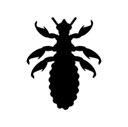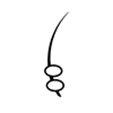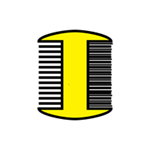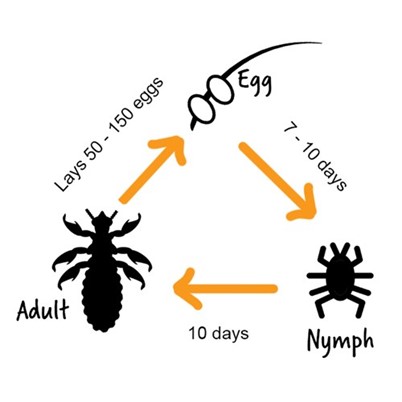Head lice are small insects that like to live in human hair. They lay their tiny, sticky eggs on the hair near the scalp. The empty egg cases are called nits. Head lice are very common. They are also sometimes called nits.
 Head lice only live in human hair.
Head lice only live in human hair.Head lice are passed from head to head by close ‘hair to hair’ contact. For this reason they are especially common in school age children who play and work closely together.
There is not much you can do to prevent head lice. The best thing is to be aware of what they look like and keep a lookout for the signs of them in your child's hair. You may notice your child itching their head but it is not always this obvious.
Getting into a habit of wet combing regularly can help keep your family lice free. It will help you treat any head lice that appear quickly and before they can get breeding!
Finding Head Lice
If you find any head lice then wet combing is the recommended way of treating them. You do not need to see a doctor. Instead follow these steps;
 You should check everyone else in the family and if you find any other head lice or eggs, then treat them on the same day.
You should check everyone else in the family and if you find any other head lice or eggs, then treat them on the same day.Continuing Treatment
Each head lice can live on a scalp for about 40 days and can lay about 100 eggs during that time. They may have laid eggs before you discovered them, so you need to be watchful for more hatching over the next couple of weeks.
Is advised you wet comb on day 1, then repeat on day 5, day 9 and day 13. Check one last time on day 17. If the head is free from newly hatched head lice then you can return to regular checking.
If you can still see head lice or eggs this could be because:
 Wet combing means brushing a fine tooth comb through wet conditioned hair, from the root to the very ends of the hair. Wet combing has been proven to be the best way to get rid of head lice. Head lice have got resistant to some of the shop bought treatments.
Wet combing means brushing a fine tooth comb through wet conditioned hair, from the root to the very ends of the hair. Wet combing has been proven to be the best way to get rid of head lice. Head lice have got resistant to some of the shop bought treatments.
There are no side effects from wet combing even for the very young, those who are pregnant or breastfeeding.
You will need:
How to wet comb:
Life Cycle
An adult head louse will lay 50-150 eggs. These eggs hatch into nymphs after 7-10 days, and 10 days after that the nymphs become adults.
Because of this life cycle, it is advised you wet comb on day 1, then repeat on day 5, day 9 and day 13. Check one last time on day 17. If the head is free from newly hatched head lice then you can return to regular checking.

If the head lice are proving hard to get rid of, talk to your pharmacist. They might advise you to use a specialist head lice product. They will need to know the ages of the people in the family who need treating. Be sure to tell them if they are pregnant or breastfeeding.
You can contact the Healthy Child Service team by calling Just One Number on 0300 300 0123 or texting Parentline on 07520 631590. Our opening hours are 8am-6pm Monday-Friday (excluding bank holidays) and 9am-1pm on Saturdays.
If you are 11-19 you can text ChatHealth on 07480 635060 for confidential advice from one of our team.
The Lullaby Trust - Baby Check App - This app has simple checks that you can do if your baby is ill and helps you think about whether they need to see a doctor or health professional.
app has simple checks that you can do if your baby is ill and helps you think about whether they need to see a doctor or health professional.
You can speak to other Norfolk parents and carers by clicking our online community forum below.